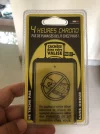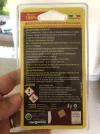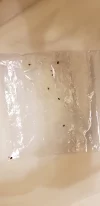Would be interesting to see similar videos showing what kind of resistance lavender oil or silk provides since those seem to be quite popular "myths" on the Camino. Have looked for studies but not found anything except ads for the various essential oils.
The myths are based on anecdotal observations. Folks observed that their personal use of a silk liner (which is a popular fabric for warm climates) coincided with no bedbug bites. Of course, some others who did not use silk liners also experienced no bedbug bites. However, as conversations and comparing notes and discussing experiences are wont to do, those using silk liners, etc, and who did not have any bedbug bites mad the association of silk = no bedbug bites.
Most of this is bias based on storytelling and word-of-mouth.
Of course there a lots of folks who used silk, and still do, who DO get bit by bedbugs. However, what is common with anecdotal 'facts' as evidence, is that the experiential observations are self-selecting to further affirm the bias. In this case, the only information heard, shared, and focused on is that of people who also used silk and suffered no bedbug bites.
Those who also used silk, but who
had bedbug bites, do not get heard for a variety of reasons: They are ignored because they do not fit the narrative; they decide not to say anything because they would be viewed negatively for not being part of the group of pro-'silkers', they might think that their experience was very atypical and so decline to say anything; they might think that they did not use the 'correct' silk or they used it wrong; etc.
The same happens with lavender and other concoctions viewed as natural. In these cases, the anecdotal evidence is not only based on the above, but is also based around confirmation bias and cherry-picking in which you ignore anything other than the result you EXPECT to see, or look at only those results which match what you WANT to see.
There is no evidence to support either silk or lavender oil ,etc. During my time with the Chelan Douglas Public Health District, I looked extensively at these issues. Right now, I cannot immediately pull up the information in my files, but lavender oil, tea tree oils, etc were as effective as using none of those substances at all. . . in other words, in practical use, there was no repellent effect.
Silk is as effective as any other material, like cotton, in providing a barrier to a bedbug. However, unless fully cocooned, bedbugs can still find a an opening through which to get a meal. Lavender oil has demonstrated no repellent effect to insects. . . but is quite effective at repelling people with sensitivity issues to such aromatics


































